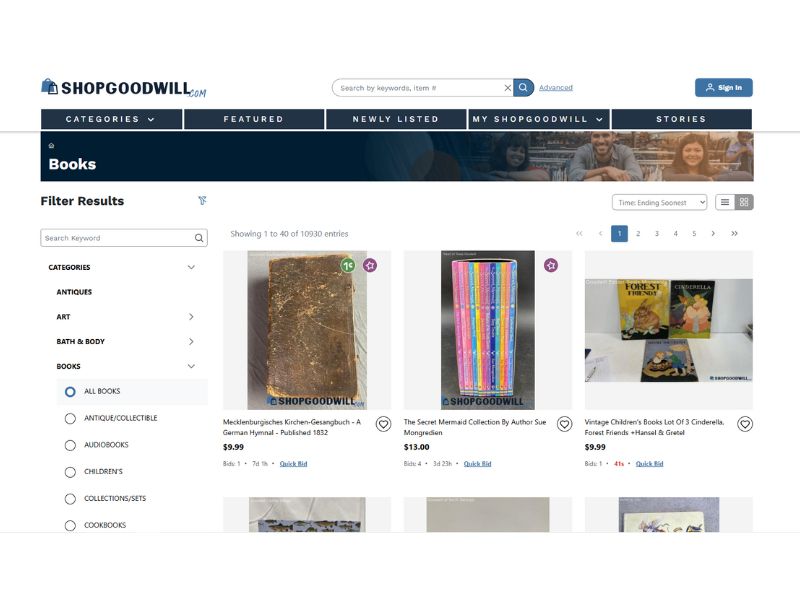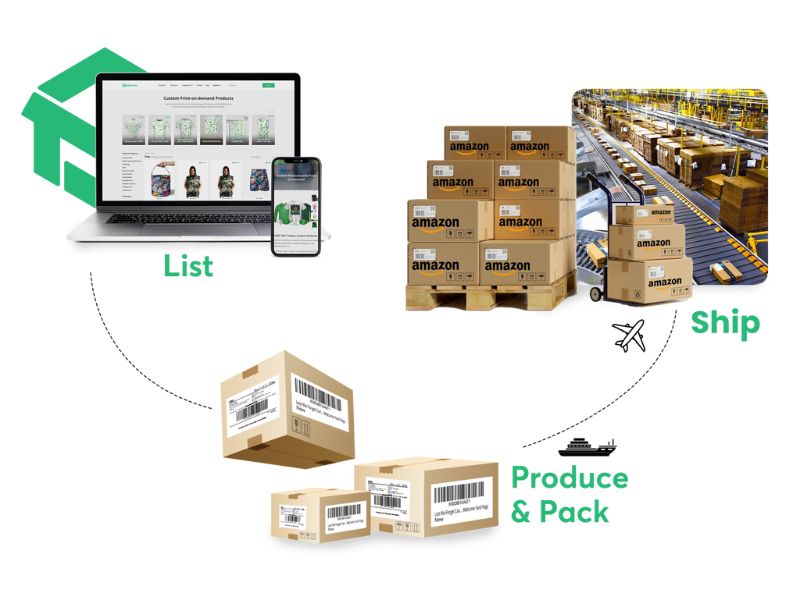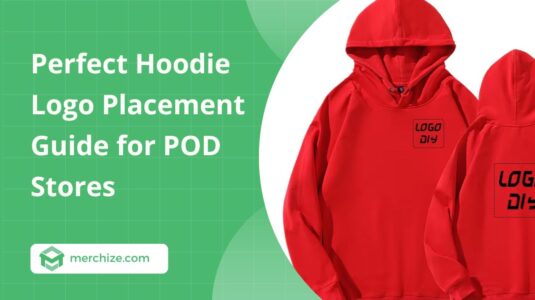Contents
While many sellers chase new trends and innovative products to stand out on Amazon, there’s a surprisingly simple and potentially profitable path that often gets overlooked: selling used items. This approach can be cost-effective to start and, with the right strategies, generate impressive margins.
Before starting, there are a few essential questions you need to answer:
- Which types of used items are allowed on Amazon?
- How can you list them effectively to maximize profit?
- What smart strategies can turn everyday clutter into cash?
In this guide, we’ll walk you through everything you need to know how to sell used items successfully and safely on Amazon.
Can you sell used items on Amazon?
Absolutely! Selling used products can actually give you a competitive edge among the millions of sellers on Amazon. This approach isn’t just for beginners; it can also benefit experienced sellers looking to expand their inventory or boost profit margins.
However, not all used or second-hand items are allowed on Amazon. Each product must meet Amazon’s guidelines, and only approved items can be listed. We’ll go into the details of which products you can sell in the next section.
>> Read more: How to sell on Amazon without inventory
What’s allowed and what’s not?
When it comes to selling used items on Amazon, not every product is eligible. Certain categories are approved for resale, while others are restricted or prohibited.
Categories allowed for used items
Some of the main categories where used items can be sold include:
- Amazon Devices & Accessories
- Amazon Kindle & Kindle Accessories
- Books
- Camera & Photo
- Cell Phones & Accessories
- Consumer Electronics
- Home & Garden
- Industrial & Scientific
- Major Appliances
- Music & DVD
- Musical Instruments
- Office Products
- Outdoors
- Personal Computers
- Pet Supplies
- Software
- Sports
- Tools & Home Improvement
- Video Games & Blu-ray
Note: Some sub-categories require Amazon’s approval before you can list products.
Refurbished electronics tend to be the most profitable items to sell. Once you start generating sales, consider sourcing used electronics in bulk from distributors or liquidation companies. Buying Amazon return pallets or bulk used merchandise allows you to sell at retail prices for a significant margin.
Categories not allowed for used items
The following categories generally do not allow used items:
- Baby Products (excluding apparel)
- Beauty
- Collectible Coins
- Entertainment Collectibles
- Fine Art
- Grocery & Gourmet Foods
- Health & Personal Care
- Independent Design
- Sports Collectibles
- Toys & Games
- Watches
In addition, there are certain products that are strictly prohibited from being sold on Amazon.
- Used items are not clean, such as those with mold, heavy stains, dirt, or corrosion.
- Damaged items that are broken or difficult to use, or items missing essential parts or components required for proper function, are also unacceptable.
- Products that require repair or servicing before they can work correctly cannot be listed.
- Items not made by the original manufacturer, including counterfeits, replicas, or unauthorized promotional copies, are prohibited.
- Products past their expiration date or with compromised shelf life are not allowed.
- Items intended for destruction or marked as unsellable by the manufacturer, supplier, or retailer cannot be sold.
- Any item specifically prohibited by Amazon, including restricted collectibles, hazardous materials, or other banned categories, is not allowed.
How to sell used items on Amazon
Step 1: Source your used products
Finding quality used items to sell is the first step. Books are a classic starting point; many sellers begin with old books lying around the house, thrift stores, library sales, garage sales, or flea markets. You’d be surprised how a book bought for just a few cents can sell for 10, 20, or even 50 times on Amazon.
Sourcing options include:
- Online marketplaces such as eBay, Craigslist, and Facebook Marketplace
- Estate sales and garage sales
- Flea markets
- Online auction platforms like ShopGoodwill or GovDeals
Step 2: Categorize your old products
Amazon divides used items into 4 conditions:
- Used – Like new/ Open box: Excellent condition, possibly minor cosmetic damage, original packaging mostly intact, includes instructions.
- Used – Very good: Gently used, small scratches or blemishes possible, may arrive repackaged or with minor missing accessories.
- Used – Good: Moderately used, functions properly, may have visible wear or minor missing parts.
- Used – Acceptable: Well-worn but functional, may have scratches, dents, or other cosmetic issues; may be missing minor accessories.
Always select the condition that most accurately reflects the item’s state to maintain transparency with buyers.
Step 3: Create your Amazon seller account
You can choose between:
- Individual account: No monthly fee, but $0.99 per item sold, ideal for occasional sellers.
- Professional account: $39.99 per month, suitable for selling larger volumes.
For sellers planning to source used items in bulk, a professional account ensures better scalability and profit margins.
Step 4: Choose your fulfillment method
Amazon offers 2 main options:
- Fulfillment by Amazon (FBA): Amazon handles storage, packing, shipping, returns, and customer service. This is ideal for sellers with larger inventories.
- Fulfillment by Merchant (FBM): You handle storage, shipping, and returns. This works well for smaller-scale operations and can offer higher margins if you manage logistics efficiently.
Consider fees, convenience, and your capacity to handle shipments when choosing between FBA and FBM.
Step 5: List your products
Listing a used item is similar to listing a new one, but you must choose the correct condition. Usually, you’ll add your offer to an existing listing rather than create a new one. Only items that already exist on Amazon can be listed as used.
Amazon also offers the Amazon Renewed program, allowing experienced sellers to list refurbished items that meet strict inspection and performance standards. Not all sellers qualify, but products in this program often command higher prices due to guaranteed quality.
Step 6: Accurately represent product condition
Honesty builds trust with buyers. Use the condition notes feature to provide detailed information on any flaws or special aspects of the product not reflected in the standard condition categories.
Don’t forget to invest in high-quality photography. A clear and well-lit photo from multiple angles helps buyers understand the product’s condition and highlight any imperfections.
Tips to avoid returns when sell a used item on Amazon
Accurately assess and list product condition
Always assign the most precise condition to your used items. When in doubt, it’s safer to list the product one level lower than you initially think. For example, if an item seems to fit the “Used – Very good” category, consider listing it as “Used – Good.”
The differences between the four used-item categories are subtle, but overestimating the condition can lead to negative reviews or customer complaints. Provide detailed descriptions of any flaws or imperfections, so buyers know exactly what to expect, which in turn improves satisfaction and reduces returns.
Check the product before shipping
When selling used items on Amazon, thoroughly testing the product before packaging is one of the most important steps to prevent returns and “item not as described” complaints. Since pre-owned items naturally show varying levels of wear, careful inspection helps confirm that the product matches your stated condition, functions properly, and won’t surprise the buyer upon arrival.
For electronics:
- Check the device’s ability to power on/off and respond normally during use.
- Test the battery: charging, discharging, and overall performance.
- Ensure all buttons, touch functions, speakers, microphones, and ports work correctly.
- Verify the serial number to confirm authenticity and consistency with your listing.
Provide exceptional customer service
Fast, polite, and helpful responses are essential. Address questions and concerns promptly, and resolve issues efficiently. Amazon values customer-centric sellers, and consistent service not only prevents negative feedback but also encourages repeat buyers.
FAQs
1. Can selling used items on Amazon be profitable?
Yes, selling used items can be profitable, especially with low upfront investment, but it’s best treated as a starting point rather than a full-scale business strategy.
2. What’s the difference between Used, Renewed, and Refurbished items?
Used items are pre-owned products sold as-is, Renewed items are inspected, tested, and repaired to meet Amazon’s quality standards with minimal cosmetic damage and a 90-day warranty, while Refurbished items are repaired and certified by the original manufacturer; renewed and refurbished are often interchangeable on Amazon.
3. Is selling used items on Amazon a good long-term strategy?
Yes, it can be sustainable by sourcing and pricing products carefully, being transparent about conditions, and providing good customer service, which helps build a loyal buyer base and steady growth.
Selling used items on Amazon is a practical, low-investment way to enter e-commerce. Success comes from understanding which products are eligible, accurately representing their condition, and sourcing profitable inventory from thrift stores, liquidation sales, or online marketplaces.
Even seasoned Amazon sellers often return to used products when they discover profitable niches. Attention to detail with accurate product descriptions, competitive pricing, and excellent customer service is the foundation for sustainable success.








